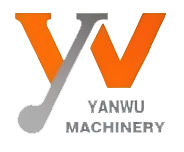How to Choose a SHUTTER DOOR Roll Forming Machine for Your Line?
Shutter doors are an essential feature in both commercial and industrial buildings, offering secure, space-saving, and durable access control. Behind every reliable shutter system is a precise manufacturing process, and choosing the right equipment plays a pivotal role. For businesses looking to boost efficiency, reduce waste, and ensure product consistency, investing in a SHUTTER DOOR Roll Forming Machine is a critical decision that can significantly impact long-term success.
But with so many options in the market, how can manufacturers identify the right machine for their specific needs? From production capacity and material compatibility to customization and automation, there are several factors to consider when selecting a roll forming solution for shutter doors.
Matching Machine Capabilities to Production Requirements
Consider Daily Output Demands
The first and perhaps most important step in selecting a SHUTTER DOOR Roll Forming Machine is determining your daily or monthly production targets. Are you manufacturing a high volume of shutter slats, or operating in smaller, customized batches? Machines designed for high-throughput environments often feature faster forming speeds, larger decoiler systems, and integrated cutting mechanisms to maintain pace with demand.
Underestimating production requirements can result in frequent machine wear, slower delivery times, and missed deadlines. Overestimating them can inflate costs unnecessarily. The right approach is to choose a system that not only handles your current volume but also leaves room for scalable growth.
Determine Material Compatibility
Another vital consideration is the type and thickness of material your shutter doors will use. Most roll forming machines can handle galvanized steel and pre-painted coils, but if your products involve aluminum or stainless steel, it’s essential to select a machine with the appropriate roller hardness, motor capacity, and feeding system.
Whether you produce lightweight domestic shutters or heavy-duty industrial variants, ensuring that a SHUTTER DOOR Roll Forming Machine supports your preferred materials will prevent quality issues and unexpected wear.
Automation Features That Streamline Production
Look for Quick Changeover Capabilities
Downtime is one of the biggest threats to manufacturing efficiency. That’s why modern roll forming machines offer quick-change tooling or adjustable roll stations. This feature allows operators to switch between shutter profiles or sizes with minimal manual adjustments, increasing flexibility without halting production for long periods.
If your business produces multiple shutter types or frequently modifies product specs, investing in a machine with tool-free or semi-automatic changeovers will dramatically improve line responsiveness and reduce setup times.
Integrated Cutting, Punching, and Stacking Systems
Many high-end systems now incorporate inline punching units for handle slots or ventilation holes, as well as hydraulic cutting mechanisms for accurate length control. Some even offer automatic stacking features for post-forming operations. These capabilities reduce the need for separate processing steps, cutting labor costs and reducing handling errors.
When evaluating options, consider how well a SHUTTER DOOR Roll Forming Machine can integrate these automated systems into one seamless workflow.

Ensuring Quality Through Engineering and Technology
Precision Engineering for Dimensional Consistency
Dimensional accuracy is critical in shutter doors, as even slight variations can affect their fit and functionality. A high-quality roll forming machine uses precision-aligned shafts, hardened rollers, and tension control systems to ensure consistent profiles over long runs.
The best machines offer tight tolerances across all forming stations, minimizing defects such as warping, twisting, or inconsistent curvature. When choosing a machine, ask about profile deviation limits and inspection reports to verify long-term accuracy.
PLC Control and Touchscreen Interfaces
Automation extends beyond hardware. Today’s top-performing machines are equipped with programmable logic controllers (PLC) and touchscreen HMIs, allowing for easy operation, digital error detection, and remote adjustments. Operators can input profile dimensions, production speed, and cutting lengths in just a few clicks.
These smart systems not only improve productivity but also help with traceability, maintenance alerts, and consistent results across shifts.
Tailoring the System to Fit Your Business Goals
Custom Profile and Branding Capabilities
If your business offers unique shutter designs or branded profiles, ensure that a SHUTTER DOOR Roll Forming Machine can be customized with specific tooling. Many manufacturers provide design consultation and tooling development for proprietary shapes, giving you a competitive edge in the market.
This flexibility allows you to cater to client-specific demands, differentiate your brand, and target premium segments with confidence.
Modular Design for Future Expansion
Even if your current operations are modest, a modular roll forming machine offers the flexibility to grow. Look for equipment that can be expanded with additional stations, cutting units, or automation modules. This ensures your investment remains valuable as production needs evolve.
Choosing a scalable system also allows you to adapt to changes in market demand or customer specifications without requiring a full equipment overhaul.
Conclusion – Investing Wisely for Long-Term Efficiency
Selecting a SHUTTER DOOR Roll Forming Machine is more than just choosing a tool—it’s a strategic decision that affects every level of production, from raw material usage to delivery deadlines. The ideal machine should align with your output goals, material types, product diversity, and future business ambitions.
With the right balance of automation, precision, and adaptability, roll forming technology empowers businesses to deliver consistent, high-quality shutter doors while maintaining cost efficiency. For manufacturers aiming to lead in the competitive door systems market, investing in the right machine is not just beneficial—it’s essential.
FAQ
What materials can a SHUTTER DOOR Roll Forming Machine process?
Most machines can handle galvanized steel, aluminum, and pre-painted coils, but material compatibility depends on machine specifications and tooling.
Is it possible to customize the shutter door profiles?
Yes, many machines allow for custom tooling to produce branded or non-standard shutter designs.
How much maintenance does a roll forming machine require?
Routine maintenance is typically minimal but crucial—cleaning, lubrication, and periodic roller inspection ensure consistent performance.
Can one machine produce different types of shutter doors?
Yes, modern machines with quick-change or multi-profile setups can handle a variety of shutter types without extended downtime.

 EN
EN



















